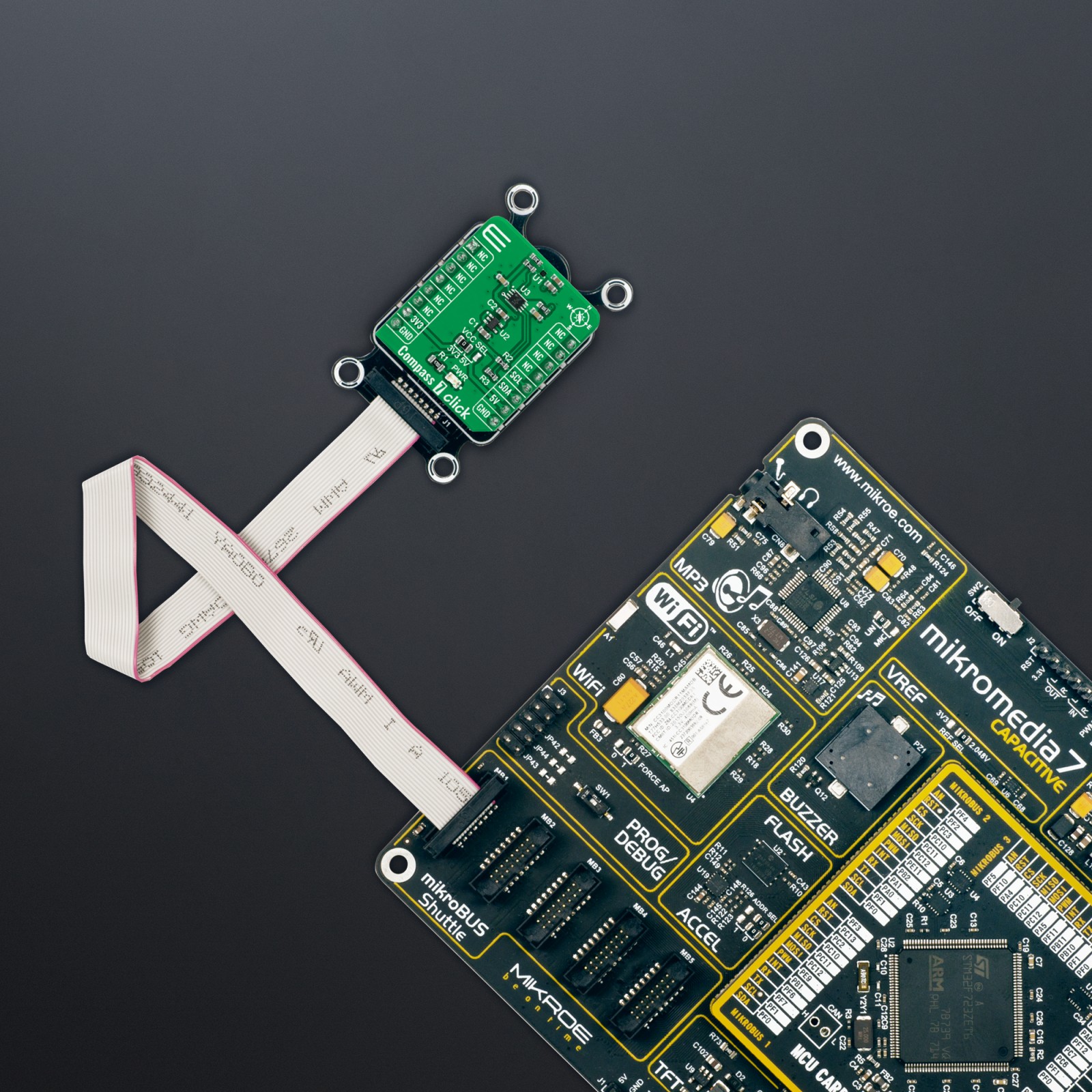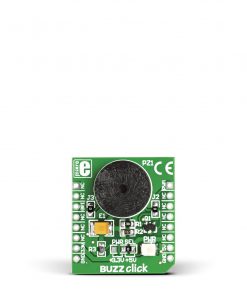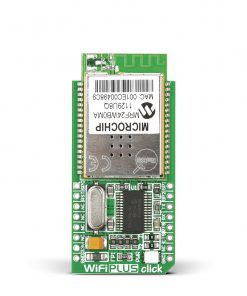Compass 7 Click
R260.00 ex. VAT
Compass 7 Click is a compact add-on board perfect for applications like an electronic compass. This board features the MMC5633NJL, a monolithic complete 3-axis AMR magnetic sensor with on-chip signal processing and an integrated digital bus from MEMSIC. It can measure magnetic fields within the full-scale range of ±30 Gauss (G) with up to 0.0625mG per LSB resolution at 20bits operation mode and 2mG total RMS noise level, enabling heading accuracy of ±1º in electronic compass applications. Also, an integrated SET/RESET function eliminates thermal variation-induced offset error (Null field output) and clears the residual magnetization resulting from powerful external fields. This Click board™ is suitable, as mentioned before, as an electronic compass but also can be used in various position sensing applications.
Compass 7 Click is supported by a mikroSDK compliant library, which includes functions that simplify software development. This Click board™ comes as a fully tested product, ready to be used on a system equipped with the mikroBUS™ socket.
Stock: Lead-time applicable.
| 5+ | R247.00 |
| 10+ | R234.00 |
| 15+ | R221.00 |
| 20+ | R212.68 |


























